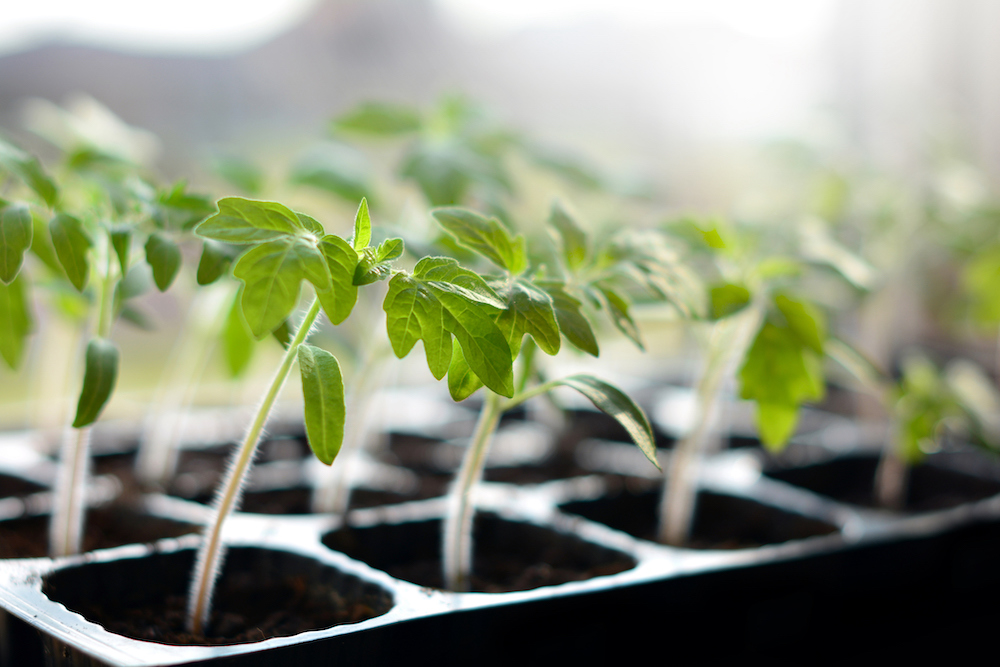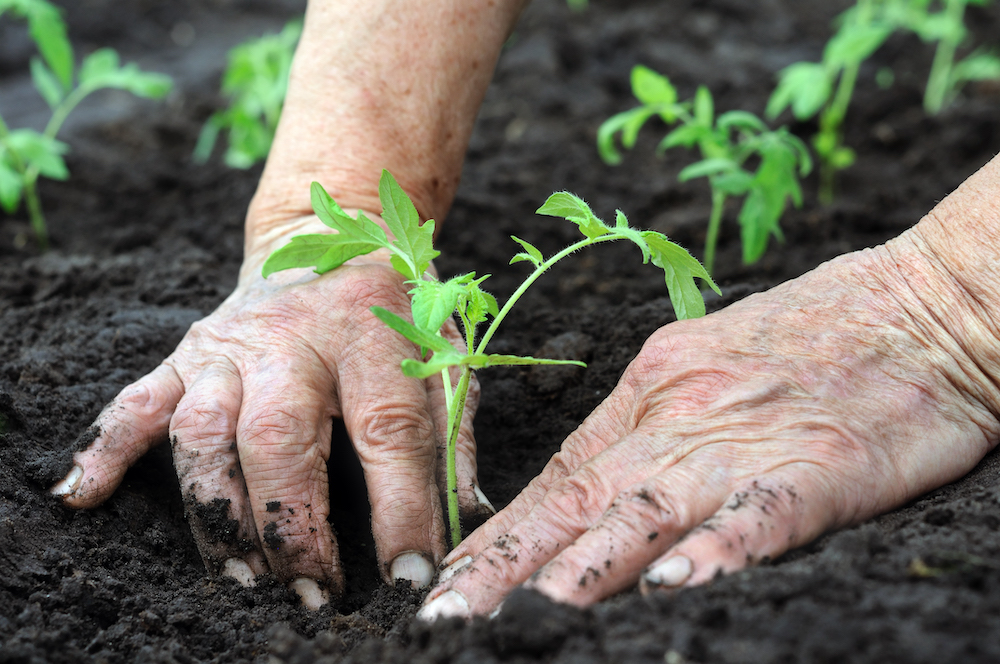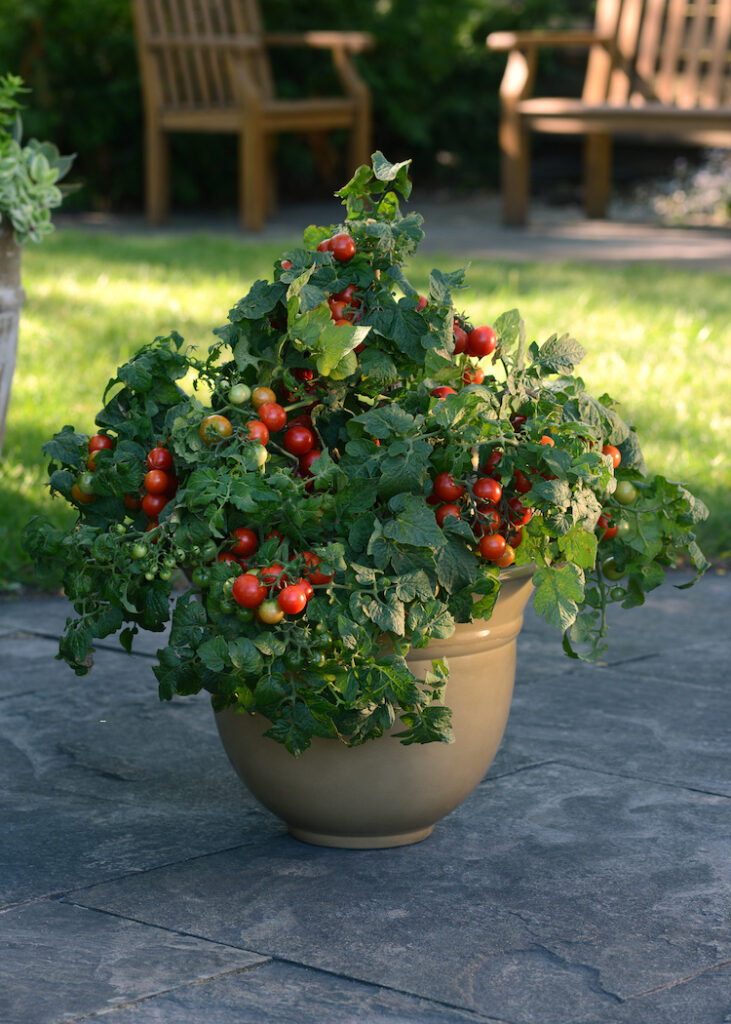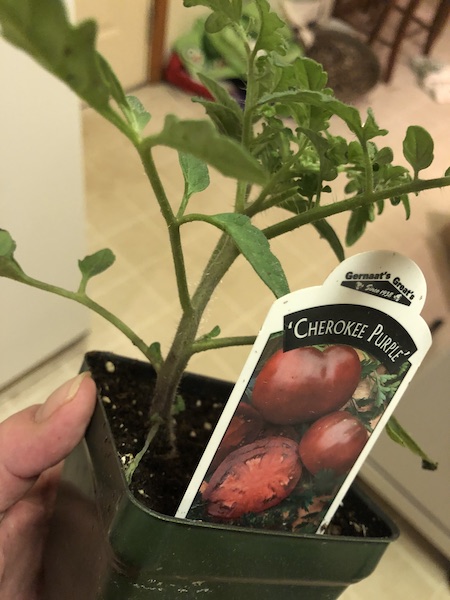
The unseasonably warm temperatures of February and early March ignited the gardening fervor in a lot of people, if social media is any indication.
Everyone gets excited and starts their tomato seeds indoors, usually too early. They fret about the lights and worry about their tall and lanky tomato transplants. Here’s how to grow delicious tomatoes to hand-pick fresh from your own Indiana garden.
Wait to sow seeds indoors.
Sowing seeds in February for warm-season plants that go in the ground in May adds a lot of stress to the seedlings. And it’s frequently difficult to continue providing the appropriate light seedlings need to grow, not to mention how much space larger plants require.

Your seed packet is the best guide.
Follow the packet’s instructions on when to sow seeds indoors. Tomatoes, peppers, squash and eggplant are at the top of the list for warm season vegetables. If you have a greenhouse, you can pretty much ignore the advice above.
There are a couple of reasons to wait.
When it comes to transplanting, the soil temperature should be 55 to 60 degrees F at a minimum for warm season vegetables. Planting warm season veggies in colder soil just delays their taking off. Experts say pepper transplants like the soil even warmer, more toward the 60+ degree range and should be planted about two weeks after you plant tomatoes.
If you can’t wait
I planted a tomato seedling in early April once. I was trying out Wall o’ Water plant protectors. The wall has channels that you fill with water. The water gets heated from the sun and protects the plant it surrounds from the cold.
The tomato grew a thumb-sized thick stalk by the time I removed the Wall o’ Water in mid-May. I didn’t really pay attention to whether the tomato plant was a better producer than those with thinner stalks at planting. There are other brands out there to try. You might even be able to create your own with several large plastic bottles filled with water to surround the plant.

The best size of tomato transplants
Plants in the 6- to 8-inch-tall range. The stouter the stem, the better. They can be planted as larger plants, but those transplants may need time to adapt. I know I read somewhere back in time that there was really no difference in the size of tomato plants on July 4, whether planted from a gallon pot or a 4-pack.
How to buy tomato transplants
Buying transplants is a lot easier than sowing seeds for tomatoes. And for beginning gardeners, transplants are more likely to mean success.
Ideally, you want to look for tomato transplants that are stout, rather than tall and lanky. Leaves should be medium to dark green and free of insect or disease damage. The roots should not be growing from the base or side or the pot the transplant is growing in.
How to plant tomatoes in the Indiana garden
There are work arounds for tall and lanky transplants. That’s because tomato transplants can be planted horizontally. Any of them. The result is strong root development along the underground stem. Here are horizontal tomato planting tips:
- Dig a trench deep enough to accommodate the transplant’s root ball.
- Pinch of the bottom leaves.
- Place the transplant horizontally in the trench.
- Backfill with the soil take from the trench, except for the top 2 or 3 inches. Don’t cover the top with soil.
- The top few inches should stick out of the soil. Although horizontal when planted, in just a few days, the top of the plant will be straight up.
- Water thoroughly.
- Install a cage, stake, fencing or other items to keep the plant growing upright. Remember that tomatoes are vining plants, so it takes a little effort to get them growing upright.
- Fertilize regularly with Espoma Tomato-tone or other organic product. Always read and follow label directions.
- Regular watering is critical to strong tomato production. If no rain, many gardeners water tomatoes, peppers and other fruiting vegetables every day or every other day.

If not horizontal, plant tomatoes deep in the Indiana garden
Unlike most plants, tomatoes can be planted deeper, a lot deeper than they were growing in the transplant container. Allow about 2 inches of the top of the tomato to remain above ground.
Where to plant tomatoes in the Indiana garden
Grow tomatoes in full sun. That’s a minimum of 6 hours of direct sun. Eight hours is better. Depending on the critters in your landscape, you may have to use fencing to protect the plants from rabbits, squirrels, chipmunks and dogs. Yes, dogs. One summer, I daily cursed squirrels for taking bites out of my just-ripened tomatoes. Then my dog Penn came up to me with tomato juice dripping from his mouth. Repellants, such as Plantskydd, also can be used to keep critters away. Always read and follow label directions. Some repellants aren’t recommended for spraying on food crops.
What about growing tomatoes in containers?
Fortunately, plant breeders recognize many gardeners don’t have a lot of in-ground space for growing plants. They’ve developed several tomato varieties that are perfect for pots. Some tomato varieties are bred to be grown in hanging baskets, such as a Terenzo, a 2011 All-America Selections. Here’s what you need to know:
A 5-gallon container is the minimum for one tomato plant. That’s the size of buckets sold at home improvement stores. The container needs drainage holes, so you may have to drill or punch some.
If plastic buckets aren’t your thing, look at Smart Pots, fabric containers made in Oklahoma out of recycled plastic. They come in all sizes and colors. I’ve grown shallots, tomatoes, peppers and lettuces in Smart Pots. They are not expensive and can be stored flat when empty, making them perfect for apartment and condo dwellers.
Use a high-quality potting mix. These are specially blended to be light weight and to promote drainage. Be sure to fertilize regularly and you’ll likely want to water every day or two if no rain.

Types of tomatoes for the Indiana garden
There are basically two ways tomatoes grow — determinate and indeterminate. If you’re wanting to can or freeze tomatoes, determinate is the way to go. These tomatoes produce tomatoes all at once, making it easier to harvest and can large batches. Indeterminate tomatoes produce a long harvest and grow until they are killed by cold temperatures.

My favorite tomato in my Indiana garden?
Cherokee Purple, an heirloom, fruit comes on a bit later in summer. Tastes like a tomato should taste. Can be grown from seed and is usually available as a transplant in garden centers.
Second favorite is about any cherry tomato. I pick them right off the plant when I walk the yard.